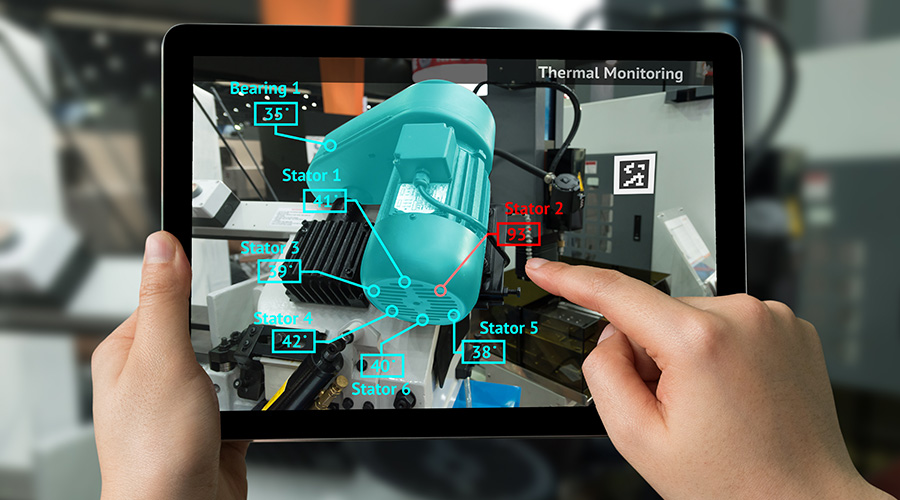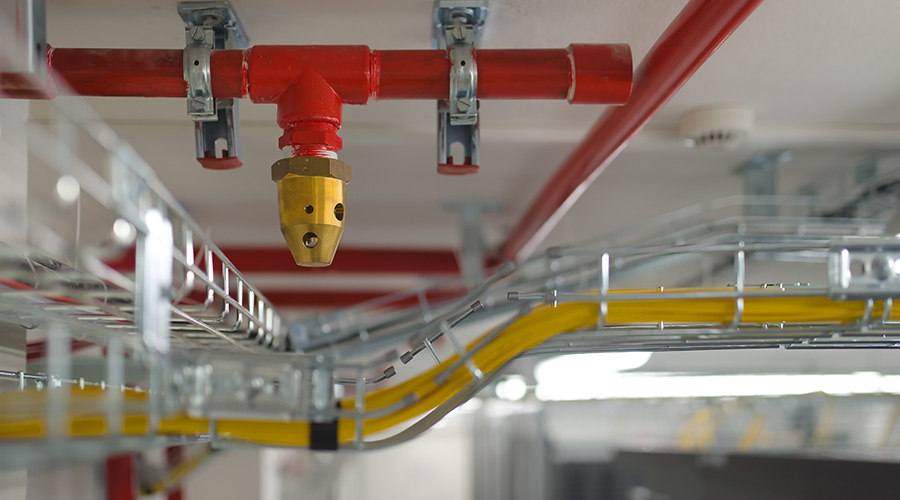Digital Training Addresses Labor Challenges
As buildings incorporate new technology, managers face the challenge of keeping pace with and staying ahead of potential safety risks
Facilities management can be a dynamic, multi-faceted and high-stakes position, so training programs give managers the opportunity to safely and confidently perform their jobs. As buildings incorporate new technology and as fire and life safety codes continue to evolve, managers are faced with the challenge of keeping pace with, as well as staying ahead of, potential safety risks.
Trade-specific training programs have been around for years, but they have never been as valued as they are today. Fifty-one percent of trade professionals plan to upskill their roles by taking part in more training than they did in 2023, according to a recent National Fire Protection Association (NFPA) report. In part, this trend is a response to the surge of digital training opportunities, such as online programs and virtual formats, that became popular during the COVID-19 pandemic.
Managers can access standardized and high-quality content without having to travel, attend an in-person class or schedule time away from work. Nationwide organizations have implemented online training programs for their employees, citing program engagement as a top reason for increased employee retention. Digital training programs allow managers to upskill in their careers from the comfort of their own home and, most importantly, on their own time. Online programs feature a self-paced approach that caters to busy professionals who like to prioritize their professional development.
Digital training methods also support the collaboration of dispersed teams. Nationwide and global companies have facility managers who must follow codes and standards specific to their locations, in addition to the companywide guidelines they must abide by. Introducing companywide training programs keeps facility managers and their teams in tune with colleagues and the organization, regardless of geographical boundaries.
Digital codes and standards
Digital access to codes and standards can help facility managers to learn on the go. To keep up with the latest editions, real-time updates are vital to ensuring projects run smoothly and maintenance is done correctly and on time.
Digitalized codes and standards support all teams involved in the design and construction process, especially managers who are expected to have a full line of sight into every element of a project. A digital hub of codes and standards acts as a home for the latest information, and it brings codes and standards to life through enhanced content, industry-specific scenarios, video tutorials and annotation features.
Gone are the days of writing critical information on sticky notes and hoping they do not fall out of the code manual. When leveraging digital tools, facility managers and their teams can experience the highest level of real-time collaboration through shared note features.
For example, when a manager needs to write notes on project-specific variances or authority having jurisdiction (AHJ) approvals for future renovations and inspections, they can share their thoughts and collaborate with other teams in one centralized location. Other project stakeholders can obtain immediate access to a manager’s strategic input regardless of whether they are on site or not. Digital tools support collaboration and facilitate documentation.
Next generation workers
The construction industry will need to attract an estimated 501,000 additional workers on top of the normal pace of hiring in 2024 to meet the demand for labor, according to the Associated Builders and Contractors Association. As the country continues to experience this massive labor shortage and retirement wave, shared notes and digital tools are preserving generational knowledge for new and existing employees alike.
Gen Z workers are inherently tech savvy and are more likely to value careers that implement tech-focused learning methods, such as gamification, virtual reality (VR) and augmented reality (AR). These innovative training modules can increase retention by enabling trainees to experience lifelike scenarios that simulate potential hazards and to practice emergency response procedures without facing life-threatening risks.
Nineteen percent of recent applicants for facilities and maintenance positions were 18-24 years old, according to Aerotek’s summer 2023 Job-Seeker Survey. As these technology-centric training methods are implemented more frequently, it will encourage the next generation of workers to pursue a career in the trades. The initial interest from the next generation is there. Now it is a matter of the way organizations harness the opportunity and execute it to experience less industry turnover.
The next generation of skilled workers is on the horizon, and now is the time for the industry to embark on its digital transformation. The average age of a facility manager is 50, with the average respondent planning to retire in 16 years, according to the 2021 Global FM Salary and Compensation report from IFMA. This Great Retirement, coupled with the skilled trade labor shortage, makes recruitment and retention an industry-wide priority. Innovative training methods that prioritize enhanced content will be critical to attracting and recruiting new talent to reduce this gap.
Accessing enhanced content
Digital tools offer enhanced content specific to the industry of the project at hand. If a healthcare facility manager is working on an operating room renovation, they can search for that specific job site and receive an interactive module that lists the codes specific to the project and shows where lighting, fire systems and medical devices should be installed or located. This enhanced content supports all stages of the design, build and maintain process. It provides managers, contractors and technicians with access to the most up-to-date information required to perform the renovation.
As facilities modernize, facility managers and their teams must prioritize learning to keep up with the pace of innovation. Smart wearable devices and AI will disrupt facility management operations and training with hazard identification through image recognition, AR-triggered references, AI-generated recommendations and remote coaching.
As facility managers and contractors recognize the need for and implement advanced training, benefits such as enhanced collaboration, employee retention and increased professional development will follow. Now is the time to shape the facilities management of the future and attract the young workforce who will conquer this increasingly challenging role amid labor gaps and retirement booms.
Bartholomew Jae is director of education and development with NFPA.
Related Topics:













